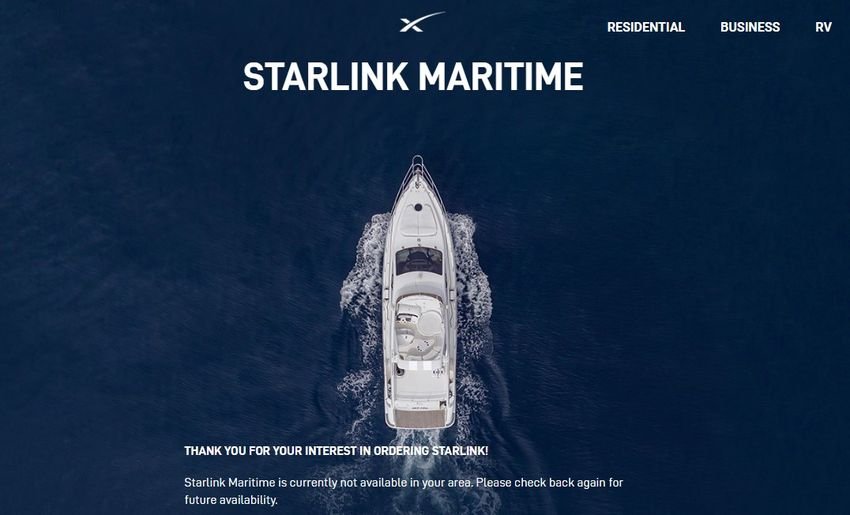If you are a "boater" and want to be connected to the internet, Starlink has brought the Maritime service that will cost you only $5.000 a month.

Starlink has just released a new satellite dish for boats and yachts, right after the corresponding antenna traffic for caravans. Internet connection service in moving vehicles could be implemented in America, after the corresponding state authority FCC (Federal Communications Commission) gave its permission for the placement of antennas in vehicles.
Starlink's new service, Maritime, can have you covered with download speeds of up to 350 Mbps while you're in the middle of nowhere. The cost is only a paltry $5.000 a month, which isn't bad for boats, since if you have a boat you have your way with the money and you never had an interstellar internet connection in the first place anyway.
However, if you were bitten by the 5.000 dollars, we inform you that the company states that as with caravans, customers can stop the service when not in use. The fee is always monthly and you will have to pay for the entire month but you can simply stop the service without a time commitment.
The RV service for vehicles and Maritime for boats is not yet available in Greece, but if you have your boat with a USA flag, you will find the solution.
As for the antenna and the rest of the hardware it will cost you only 10.000 dollars, which you have to pay in advance. Correspondingly in America, the Starlink antenna for homea costs only 599 dollars, and the service 110 dollars per month.
The head of her SpaceX, Elon Musk, explained on Twitter that Starlink Maritime antennas are different from their home counterparts. As he said: They are "dual high-performance terminals" and have the power to maintain the connection in rough seas and heavy storms. All materials were designed to withstand “relentless salt spray and extreme winds and storms.
In fact, Musk mentioned that SpaceX is paying $150.000 a month for "a much worse connection" on its ships.
Finally let us inform you that the Starlink Maritime page states that the service it allows you to connect from the most remote seas around the world, but it is worth noting that the coverage area is still limited.
For now, it will only work in the coastal waters of the US (excluding Alaska), Europe (except most of Norway, Sweden and Finland), Australia, Brazil, Chile, most of the southern part of Australia and New Zealand.
And if the coverage map on the company's site says it right, then the entire Mediterranean Sea is within. Starlink is expected to roll out connectivity to more locations in the fourth quarter of 2022 and next year.





